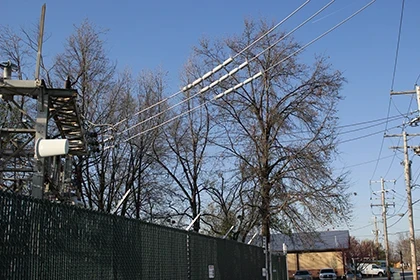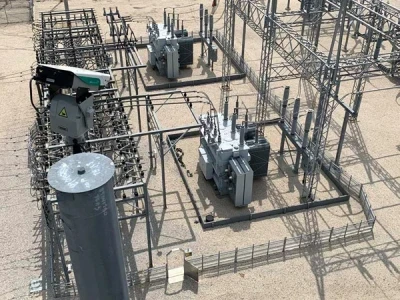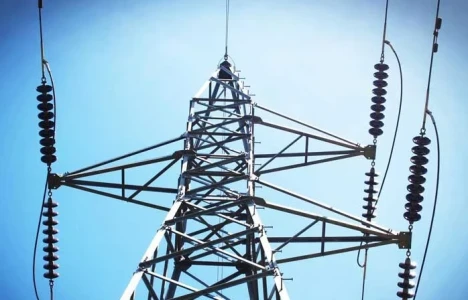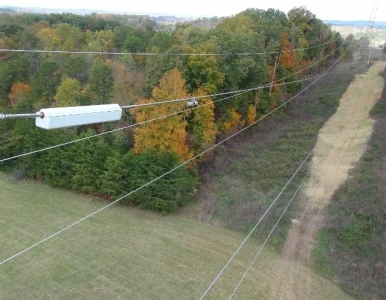Outage Management & Restoration
Digital Twins for Substations: Bridging the Physical and Digital Worlds
BIRDS AND SUBSTATION OUTAGES
Outage Management & Restoration

Animal Outage Prevention
According to the American Public Power Association, squirrels are among the top causes of power outages across the United States. Depending on your geographic region, there may be no “quiet” season - squirrels and other “Critters” can be active all year long.
Since you’re reading this - you already know the damage these critters can do and the cost, downtime, and nuisance it is to deal with the aftermath of an outage. Nowhere is the...
Related Articles

BIRDS AND SUBSTATION OUTAGES
Birds wreak havoc at hundreds of substations every year, undermining system reliability and costing millions. Bird incursions can have disastrous results: equipment damage, outages and expensive cleanups due to corrosive droppings.Even worse: the traditional deterrents provide only temporary,...

The Fight Against Animal-Caused Power Outages
Every day across North America, animals enter electrical substations in search of warmth, food, shelter, or simply out of curiosity. What often begins as routine wildlife behaviour can escalate quickly into serious grid reliability issues. In many service territories, wildlife intrusion is now the...

Emergency Response Kitting
Equipping utilities to restore power quickly and efficiently BY JOE D’ORAZIO, HD Supply Power Solutions In the days before Hurricane Sandy hit the East Coast of the United States, knocking out power from North Carolina to Maine and as far inland as Western Pennsylvania, utility contractors were...

Smart Meters for Outage Management
Reviewing the benefits and addressing the obstacles BY RON CLANTON & MARK HOLLIDAY, KPMG LLP The outage management process has undergone remarkable changes over the last several decades. The need to respond to power outages when they occur has been around since the first lines were run from...

FERC Complaint Targets Duke, PJM Transmission Planning
A coalition of large energy consumers and ratepayer advocates has filed a complaint with the Federal Energy Regulatory Commission (FERC), urging the agency to prohibit transmission owners from independently planning "local" transmission projects exceeding 100 kilovolts (kV). The coalition argues...

FERC Approves Interconnection for Talen Energy, Amazon Data Center
In a significant move that underscores the growing demand for reliable and sustainable energy to power the expanding digital infrastructure, the Federal Energy Regulatory Commission (FERC) has approved an interconnection agreement between Talen Energy, Amazon Web Services (AWS), and Exelon. This...

Digital Twins for Substations: Bridging the Physical and Digital Worlds
In the rapidly evolving landscape of power grid management, digital twin technology is emerging as a game-changer for substations. By creating virtual replicas of physical assets, digital twins bridge the gap between the physical and digital worlds, enabling enhanced operational efficiency and...

Climate Change Strains Global Electricity Networks: A Wake-Up Call
The increasing frequency and intensity of climate-related disasters are placing unprecedented strain on the world's electricity networks, with severe implications for global energy security. According to a recent Bloomberg report, the effects of climate change are pushing many electricity grids to...

The End of the Road for Transmission Incentives
In a significant shift, the Federal Energy Regulatory Commission (FERC) has decided to abandon its transmission incentives policy, particularly the construction work in progress (CWIP) incentives. This decision marks a pivotal change in how transmission projects are financed and regulated,...

ArmorBuiltTM Wildfire Shield Proven Protection for Utility Poles
IntroductionIn November of 2018, the deadliest, most destructive wildfire in California history burned a total of 240 square miles, destroyed 18,804 structures and resulted in 85 civilian fatalities. Known as the Camp Fire, it devastated several communities including the towns of Paradise and...
